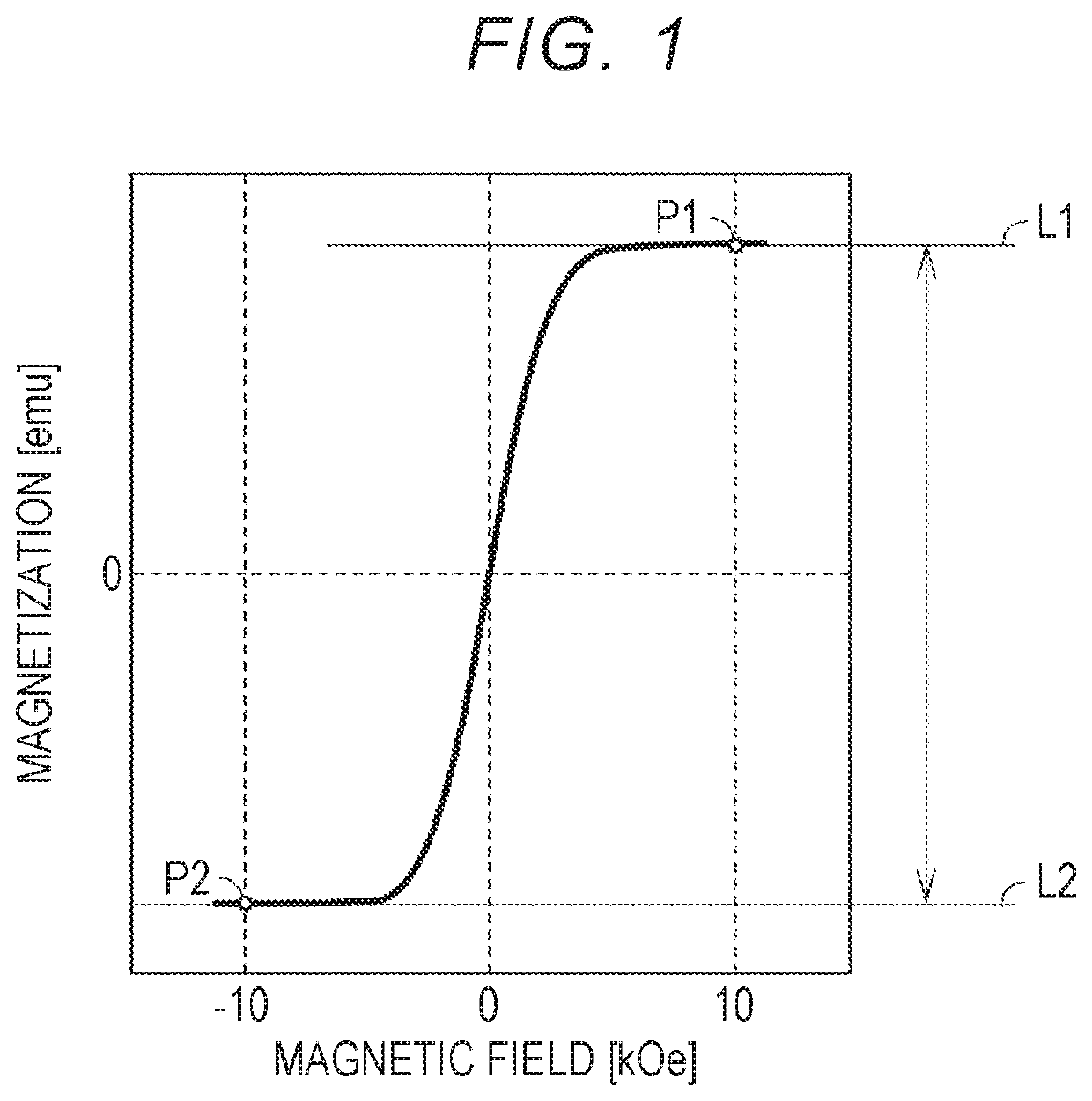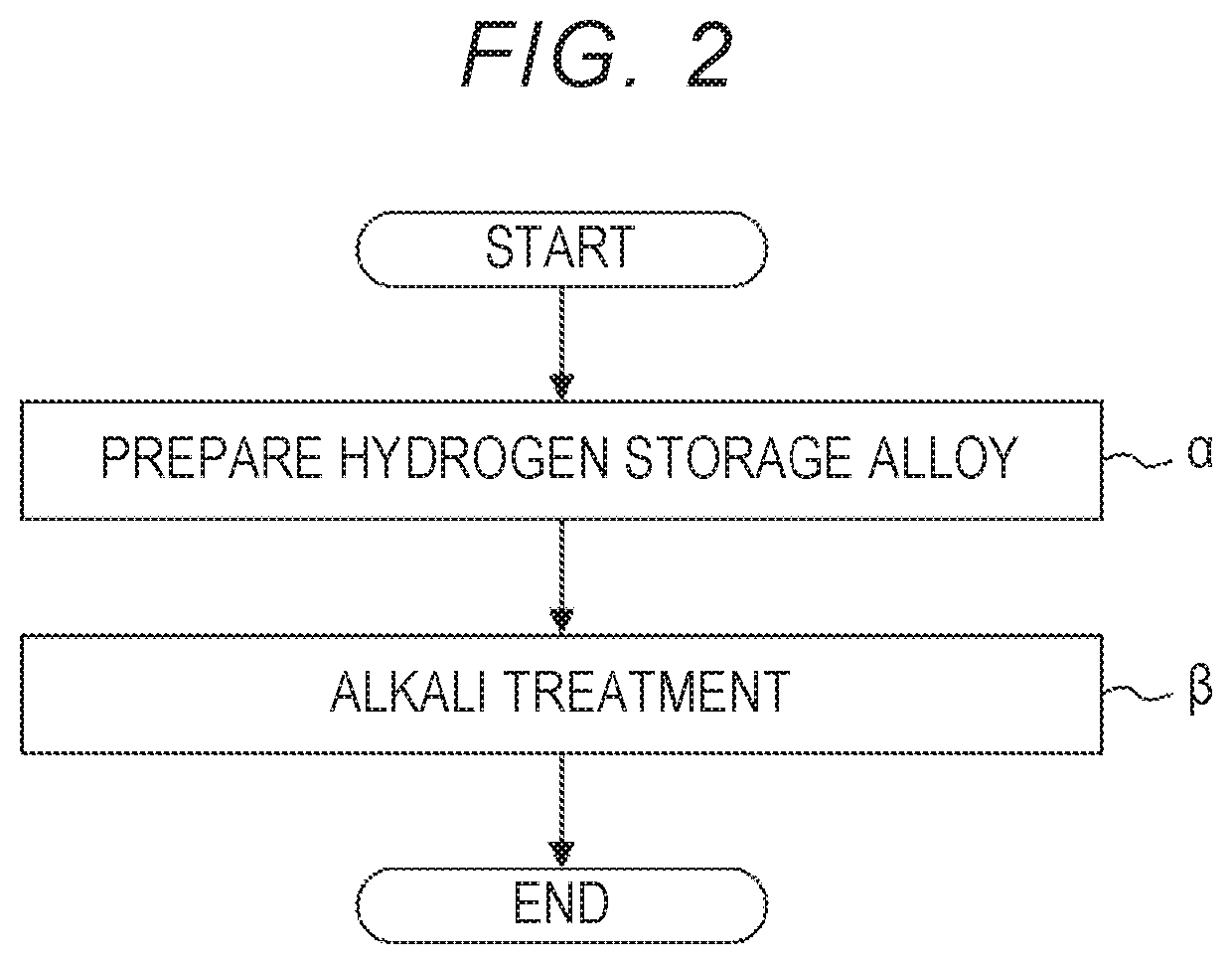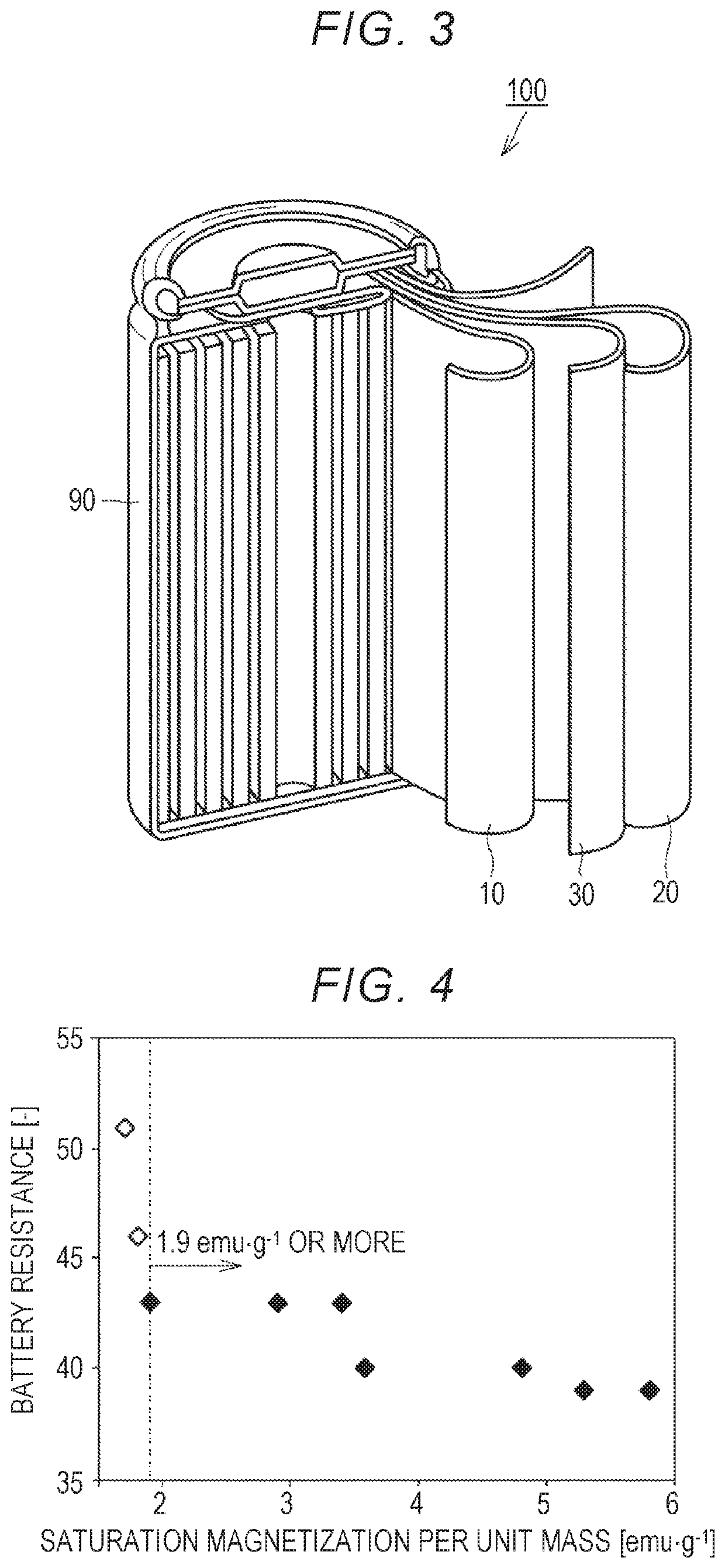Negative electrode active material, negative electrode, alkaline storage battery, and method of producing negative electrode active material
a technology of active materials and negative electrodes, which is applied in the direction of cell components, final product manufacturing, sustainable manufacturing/processing, etc., can solve the problem of asub>2/sub>b/sub>7/sub>alloy hydrogen storage capacity tends to decrease, and achieves significant reduction of battery resistance
- Summary
- Abstract
- Description
- Claims
- Application Information
AI Technical Summary
Benefits of technology
Problems solved by technology
Method used
Image
Examples
example 1
1. (α) Preparation of Hydrogen Storage Alloy
[0053]A RE-Mg—Ni alloy (RE=La) powder was prepared. The alloy had an A2B7 crystal structure.
2. (β) Alkali Treatment
[0054]A NaOH aqueous solution was prepared. The concentration of the NaOH aqueous solution was 30 mass %. The NaOH aqueous solution was heated to 90° C. A hydrogen storage alloy powder was immersed in the heated NaOH aqueous solution for about 1 hour. Thereby, a negative electrode active material was produced. The negative electrode active material was washed with water and dried. After drying, the “saturation magnetization per unit mass” was measured by the above method. The results are shown in the following Table 1.
3. Production of Alkaline Storage Battery (Refer to FIG. 3)
[0055]Here, 100 parts by mass of the negative electrode active material, 1 part by mass of the binder and water were mixed, and thereby a negative electrode mixture slurry was prepared. The binder contained a synthetic rubber. Regarding the current collec...
examples 2 to 7
, and Comparative Examples 1 to 3
[0057]As shown in the following Table 1, a negative electrode active material was produced in the same manner as in Example 1 except that conditions for “(β) alkali treatment” were changed. A negative electrode containing a negative electrode active material was produced in the same manner as in Example 1. A battery was produced in the same manner as in Example 1. Here, in Comparative Example 1, “(β) alkali treatment” was not performed.
[0058]The battery was subjected to an initial charging and discharging cycle under the following conditions.
Charging: current rate=0.1 C, charging time=15 hours
Discharging: current rate=0.2 C, cut-off voltage=1 V
[0059]“C” is a unit of a current rate. At a current rate of 1 C, the rated capacity of the battery was discharged for 1 hour.
[0060]After initial charging and discharging, the battery was subjected to activated charging and discharging under the following conditions.
charging: current rate=0.5 C, charging time=2 ...
PUM
| Property | Measurement | Unit |
|---|---|---|
| Temperature | aaaaa | aaaaa |
| Temperature | aaaaa | aaaaa |
| Temperature | aaaaa | aaaaa |
Abstract
Description
Claims
Application Information
 Login to View More
Login to View More - R&D
- Intellectual Property
- Life Sciences
- Materials
- Tech Scout
- Unparalleled Data Quality
- Higher Quality Content
- 60% Fewer Hallucinations
Browse by: Latest US Patents, China's latest patents, Technical Efficacy Thesaurus, Application Domain, Technology Topic, Popular Technical Reports.
© 2025 PatSnap. All rights reserved.Legal|Privacy policy|Modern Slavery Act Transparency Statement|Sitemap|About US| Contact US: help@patsnap.com



